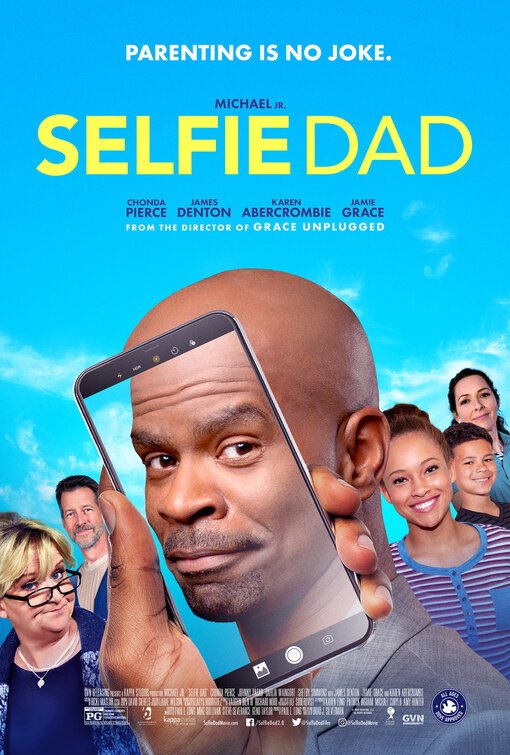
STAR TREK: PICARD – The Singularity is Here
By Allen Rushing, Movieguide® Contributor
Beyond the nostalgia of Sir Patrick Stewart’s reprisal of his role as Jean-Luc Picard, STAR TREK: PICARD is compelling on another level: it proposes a cinematic fulfillment of man’s deep-seated desire to cheat death.
In the Season 1 Finale, Picard literally has his consciousness transferred from his dying biological body to a new synthetic “golem” body via “Bruce Maddox’s consciousness download technology.” This is the pagan eschatological dream of futurists around the world come true in cinema. In other words, these futurists want to have transcendence without God.
Since the Fall, man has been seeking to escape the consequences of sin: evil, violence, sickness, and death. Notable futurist Ray Kurzweil, in his book, The Singularity is Near, suggests the manifestation of the kind of humanistic, technological transcendence that Picard experiences in the STAR TREK: PICARD Season 1 finale; Kurzweil actually proposes a future possibility of a “consciousness upload” that says that which is perceived to be the essence of humanity (soul, mind, consciousness, etc.) is transferred to “a suitable nonbiological” new body (The Singularity is Near, pp. 376-382).
This is the futurist conception of how humans may “transcend their biology” (see book title), becoming cybernetic organisms, cyborgs (The Singularity is Near, pp. 309-312), and ostensibly gaining “eternal life” (The Singularity is Near, p. 323) with a new body.
STAR TREK has certainly always been on the futurist philosophical side in the great debate regarding human transcendence. Its creator, Gene Roddenberry, followed in the philosophical steps of earlier futurists like Arthur C. Clarke and inspired those after him like Ray Kurzweil. Working from the presupposition of Clarke’s famous “third law”—that “any sufficiently advanced technology is indistinguishable from magic”—these men glibly look forward to the time when humans will unite with their technological creations (assumed to be superior to humans) to bring about the advent of “human-machine civilization” (The Singularity is Near, p. 389). This is ironic because the fondest wish of Data, the android member of Picard’s crew in STAR TREK: THE NEXT GENERATION, was to be human.
Picard’s “upgrade” to a synthetic new body is the cybernetic pagan version of “the spiritual body” of which Paul writes in I Corinthians 15:42-55, and this is why theorists like Kurzweil use such obviously biblical terms as “eternal life” and “transcendence” to describe their pagan, twisted version of the biblical eschatological ascension promised in and through the indwelling Spirit of God. What STAR TREK: PICARD seems to be doing very intentionally is giving this futurist pagan dream a cinematic reality in order to convince viewers that the futurist lie is the truth, and that, if technology just advances enough, humanity can transcend biology and cheat death.
In presenting this momentous philosophical content to its viewers, STAR TREK: PICARD attempts to go even further than the outspoken Ray Kurzweil. In effect, the series aims to upgrade Kurzweil’s The Singularity is Near to “The Singularity is Here.”
But how should Christians respond to such an anti-biblical yet popular view of the world?
For the fully equipped Christian, this worldview warfare waged between the biblical and the futurist eschatological vision is no cause for alarm. Even if one was able to, so to speak, exchange their humanity for cybernetic immortality, this would still not invalidate God’s true definition of immortality and transcendence, nor negate that the “upgraded” or “enhanced” human is still a creature made in the image of his or her Creator. It is important to remember that Christ is still reigning and in control of this future eventuality.
Nevertheless, Christians need to be prepared to engage in worldview analysis and evaluation in order to help postmodern man to see the true and more beautiful eschaton, the Story of the End that is found in Scripture. From the beginning, humanity was placed by God on a path of transcendence, from glory to greater glory via the indwelling of the Holy Spirit (II Corinthians 3:18) and the gift of the resurrection body (I Corinthians 15:35-57). While the pagan futurists see the hope of human transcendence as simply a matter of man’s quantitative technological advancement, Scripture defines the process of human transcendence as qualitative glorification in and through Christ and the ascension to a new state of being with a glorified, Spirit-empowered, imperishable body (I Corinthians 15:42-49).
Put another way, futurists seek a quantitative transcendence without God, while Christians look forward to a qualitative transcendence in and through God alone.
Therefore, watching something like STAR TREK: PICARD offers a uniquely transparent window into the mind of postmodern man specifically in relation to his pagan eschaton of transhumanism. Futurists from Asimov and Clarke to Roddenberry and Kurzweil are sure that if mankind can somehow “transcend biology”, then he can overcome all the effects of the Fall and even “live forever”, if he wants to. What an opportunity then, for Christians to engage with this pagan eschaton in worldview warfare with the purpose of pointing people to the biblical eschaton, the “hope” that “does not put [one] to shame” (Romans 5:5).
As the advent of Picard’s cinematic “resurrection” via “consciousness transfer” sparks continued debate about whether the new Picard is still the old Picard, Christians have a unique opportunity to speak into the lives of postmodern men and women, engaging them with the stories they themselves are telling, comparing and contrasting them to The Story, and in so doing helping today’s postmodern seekers to make sense of life, the cosmos, God, and man.



 - Content:
- Content: 
 - Content:
- Content: 
